| HOME |
|---|
CANIS MAJOR
The Big Dog
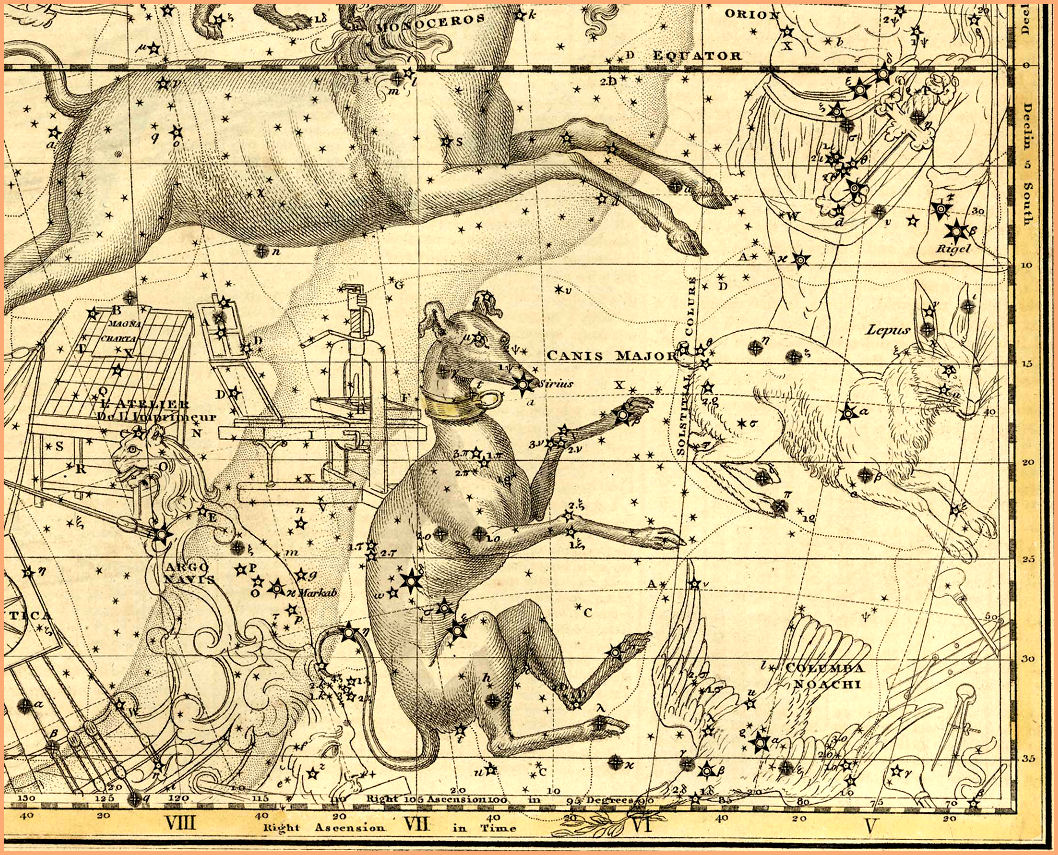
Canis Major - Celestial Atlas by Alexander Jamieson - 1822
| HOME |
|---|

Following faithfully at Orion's heels is Canis Major, the big dog. Part of the Orion family of constellations, it represents the larger of Orion's two hunting dogs. It is a constellation that has had a lot of attention throughout history from cultures all over the world, because it contains far and away the brightest star in the entire night sky - Sirius, the Dog Star. With a magnitude of -1.46, it is more than twice as bright as the next brightest star, magnitude -0.72 Canopus.
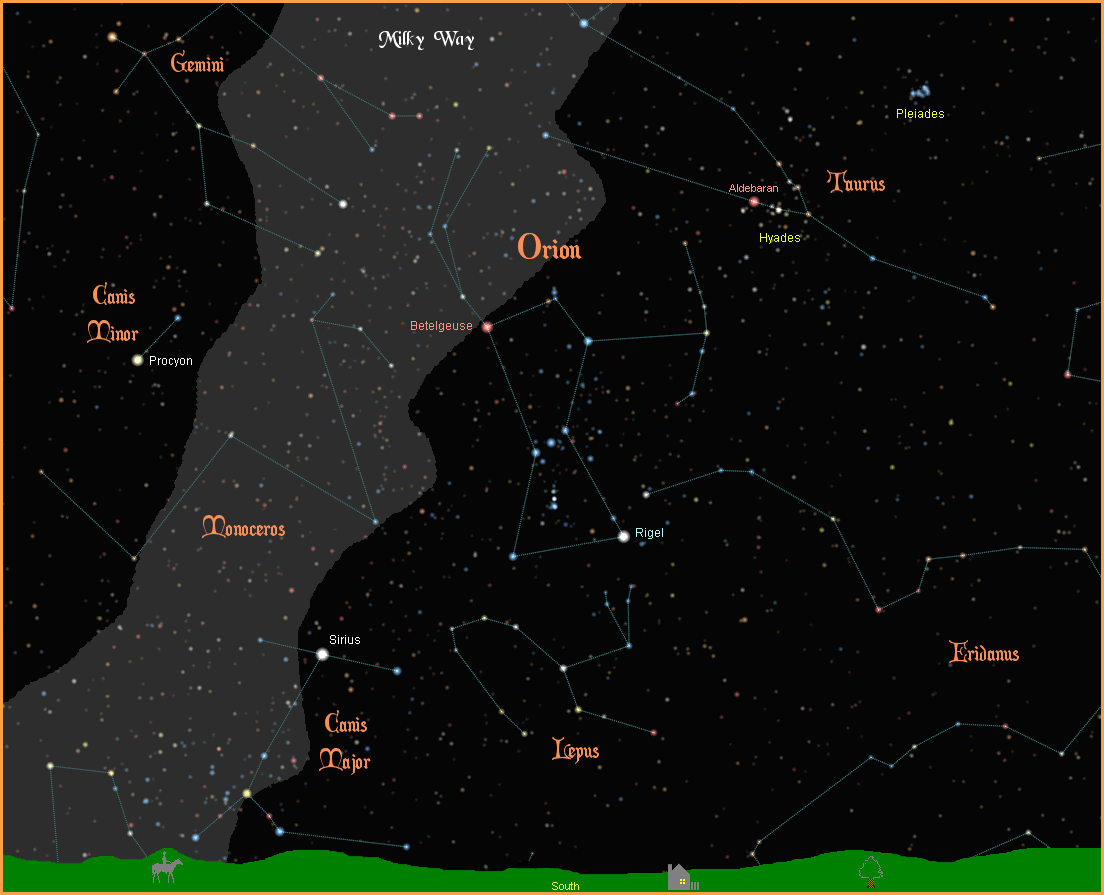
In ancient Egypt, Sirius was revered as the Nile Star, or the Star of Isis. Some Egyptian temples were aligned with window openings facing east, directly where the Dog Star rose, and when the light from the star shone through the opening, it meant the Nile was about to commence its annual flood, spreading its waters and rich soil over the adjoining floodplain, an occurrence critical to the survival of the Egyptian people. Some ancient Mayan temples as well were aligned with Sirius, as it signaled the advent of the all important rainy season.
By the time the hot days of July and August arrive, Sirius is rising with the Sun, and the "dog days of summer" are upon us. In ancient times it was thought the energy of Sirius combined with the Sun at this time, and the star was blamed, in the words of Robert Burnham Jr., for "bringing forth fever in men and madness in dogs."
Dante spoke of "the great scourge of days canicular".
Virgil wrote, "the Dog Star, that burning constellation, when he brings drought and diseases on sickly mortals, rises and saddens the sky with inauspicious light".
Even in Homer's Illiad, we read of the wrathful Achilles "blazing as the star that cometh forth at Harvest-time, shining forth amid the host of stars in the darkness of the night, the star whose name men call Orion's Dog. Brightest of all is he, yet for an evil sign is he set, and bringeth much fever upon hapless men..."
The name Sirius is Greek for scorching. It is an A1V blue/white main sequence star, 1.8 times the diameter of the Sun. The reason it is so bright is because it is so close, only 8.7 light years away, the second closest naked eye star to Earth (after Alpha Centauri), and the fifth closest star overall. Because Sirius is so bright, when it is close to the horizon, it puts on quite a show, atmospheric refraction turning it into a wild kaleidoscope of dazzling, sparkling colors.
In 1862 Sirius was discovered to have a tiny white dwarf companion star, dubbed Sirius B, or The Pup. You can see the little dwarf as a small white dot in the lower left of the Hubble image below.
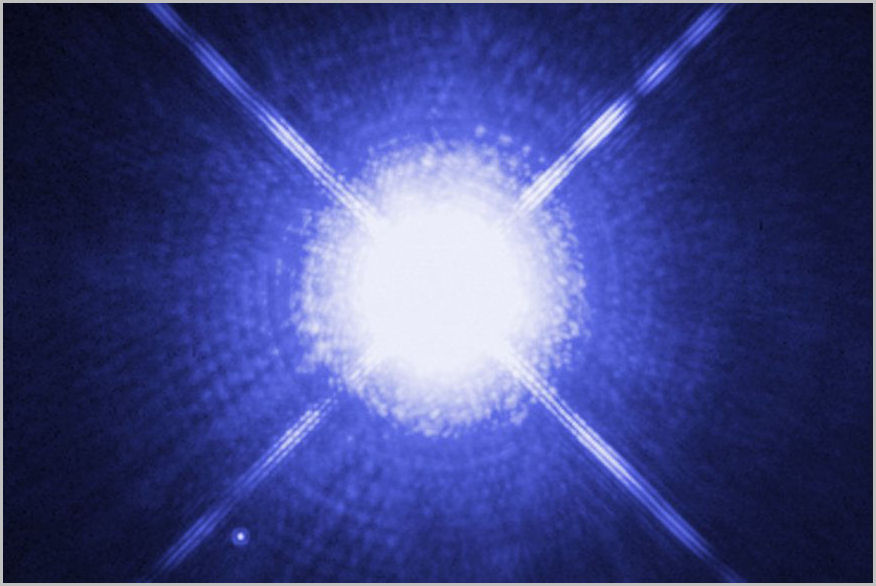
Although Sirius is unmistakably blue/white in colour, nearly all ancient texts refer to it as red. Some suggest that colours were sometimes interpreted differently in ancient times. But another possible explanation surfaced with the 1862 discovery of the tiny companion star to Sirius, Sirius B, which is a white dwarf. A white dwarf is the evolutionary descendent of a red giant, leading to the speculation that in ancient times Sirius B was in fact a red giant that overshadowed Sirius, accounting for the red colour. The problem is that it should normally take at least 100,000 years for a red giant to become a white dwarf, so the colour discrepancy remains a mystery.
In 1976 American author Robert Temple wrote a controversial best selling book called The Sirius Mystery, claiming that the primitive Dogon tribe of Mali, West Africa, possessed knowledge of the existence of Sirius B, and many of its characteristics. Since Sirius B is far beyond naked eye visibility, the book suggests this knowledge was imparted to the Dogon when they were visited by aliens who lived in the Sirius star system. Scientists world wide were quick to analyze his data and his theories, and most, including legendary astronomer Carl Sagan, found them wanting. Famed British astronomer Ian Ridpath conducted an excellent in depth study of Temple's theories called Investigating The Sirius Mystery.
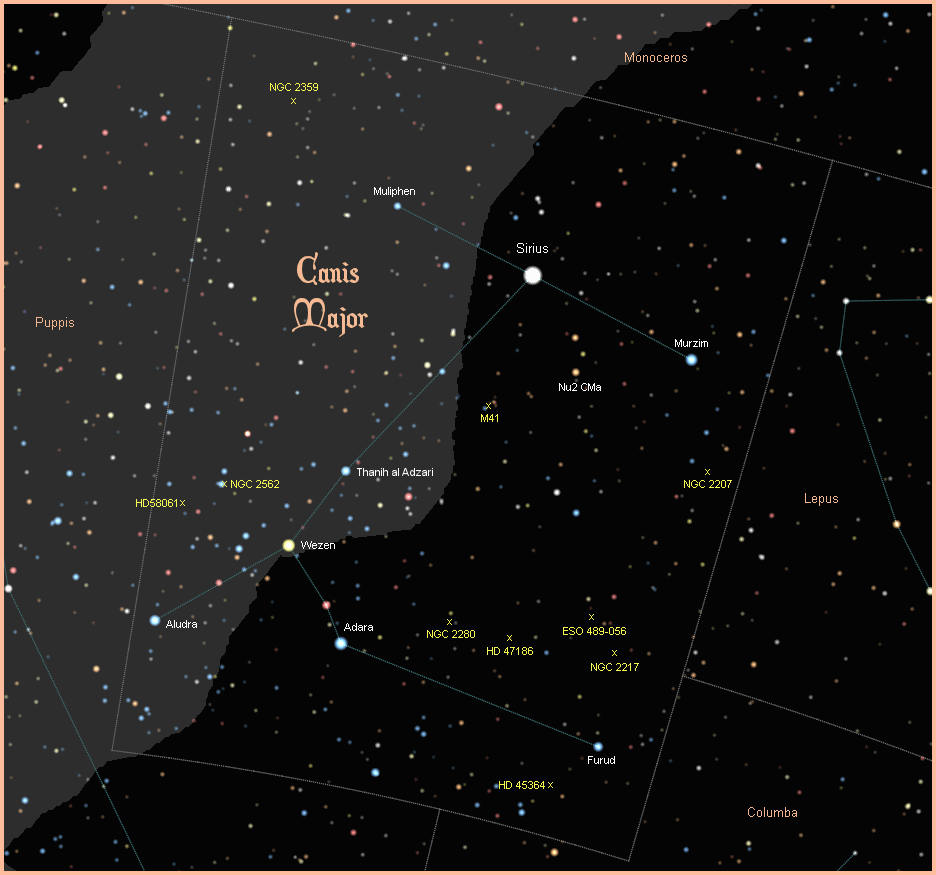
Beta Canis Majoris is named Murzim, Arabic for the announcer, as it precedes Sirius across the sky, heralding the appearance of the great dog star. It is a B1III blue giant, also classified as a Beta Cephei variable, a star with a small but regular variability. It has a magnitude of 2.0 and is 500 light years away.
Gamma Canis Majoris is named Muliphen (or Muliphien), from the Arabic "Al Muhlifein," an ancient title that has been applied (with various spellings) to different stars and groups of stars through the ages. Its modern translation eludes even Allen, but seems to involve an ancient Arabic profanity towards stars that are not what they appear to be. How it came to be applied to dim little Gamma Canis Majoris is anybody's guess, perhaps for the same mysterious reason the faint star was allotted the high Bayer ranking of Gamma. From a great distance of 441 light years, the B6III blue giant can only manage a magnitude of 4.11.
With a magnitude of 1.5, Epsilon Canis Majoris is the second brightest star in the constellation. It's named Adara (or Adhara), from the Arabic "Aoul al Adzari", first of the virgins, as along with Wezen, Aludra and Thanih al Adzari, it forms an ancient Arabic grouping called "Al Adhara", The Virgins. It is a B1III blue giant, 450 light years away.
Omicron(2) Canis Majoris has the Arabic name Thanih al Adzari, second of the virgins. It is a B4I blue supergiant, so luminous that even at the very great distance of 2,800 light years, it's still bright enough to shine in our sky with a magnitude of 3.04.
Eta Canis Majoris is Aludra, Arabic for the virgin. It is a B5I blue supergiant, another super luminous star that manages to shine brightly at magnitude 2.4, even though it is 2,000 light years away.
The fourth virgin is Delta Canis Majoris, named Wezen, Arabic for weight, to which R.H. Allen adds, "as the star seems to rise with difficulty from the horizon"; but Ideler justly calls this an astonishing star-name." It is an F8I yellow supergiant, yet another star with impressive luminosity, shining at magnitude 1.8 from 1,800 light years away, making it the third brightest star in the constellation.
Zeta Canis Majoris is known as Furud, the solitary one. It is a spectroscopic binary, 360 light years away. The primary star is a B2V blue main sequence star, with a magnitude of 3.0.
Before we leave the stars of Canis Major, there is one more to take note of. Although it is unnamed and well beyond naked visibility, it is one of the largest stars ever discovered. Designated VY Canis Majoris, it has a diameter of over 1 billion miles (compared to our Sun's diameter of only 1 million miles), and classified as an M30 red hypergiant nearing the end of its life, and beginning to surround itself with a nebula of expelled gases, as shown in the Hubble image below.
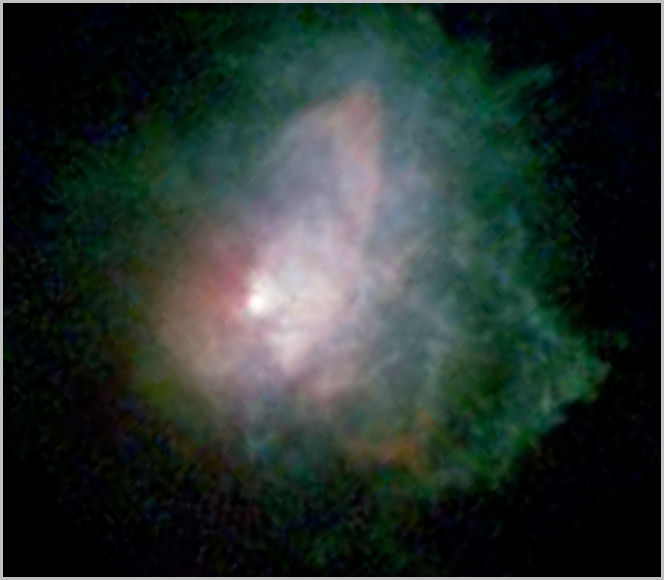
Canis Major contains eight stars known to support planetary systems. NU02 Canis Majoris is bright enough at magnitude 3.95 to be easily seen with the naked eye. Classified as a K1III yellow/orange giant, it has a gas giant planet in orbit around it 2.6 times the size of Jupiter. The planet, 7 CMa b, is about twice as far from its sun as Earth (1.9 AU), and takes about twice as long to complete one orbit (763 days). It is the closest known planetary system in Canis Major, about 65 light years away.
Almost twice as far at 106 light years is HD 45364, a G8V yellow main sequence star similar to our Sun. Beyond naked eye visibility at magnitude 8.08, it has two known planets. HD 45364 b, which is only 0.19 times the mass of Jupiter and approaching super earth size, is about 63 million miles (100 million kms) from the star and takes 227 days to complete one orbit. HD 45364 c is 0.66 times the mass of Jupiter, in a 343 day orbit, 83 million miles (133 million kms) from the star.
A little farther away at 123 light years and still beyond naked eye visibility at magnitude 7.63 is HD 47186, a G6V yellow main sequence star, very like our Sun, which also has two known planets. HD 47186 b is a super earth, about 20 times the mass of our planet. Unfortunately it is dangerously close to its parent star, only 4.6 million miles, taking only 4 days to complete an orbit, and presumably far too hot to support life. HD 47186 c is about a third (0.35) the size of Jupiter, in a 1,354 day orbit, 223 million miles (357 million kms) from the star.
The remaining five stars known to host planets in Canis Major are all very dim and far away, and the planets are all large gas giants. For more information on these and other exoplanets, visit NASA's New Worlds Atlas, and The Open Exoplanets Catalogue.
Just below Sirius is the bright open star cluster M41 (NGC 2287). At magnitude 4.5 it is visible to the naked eye, and a good target for backyard telescopes. Containing about 100 stars, the cluster is 2,300 light years away.
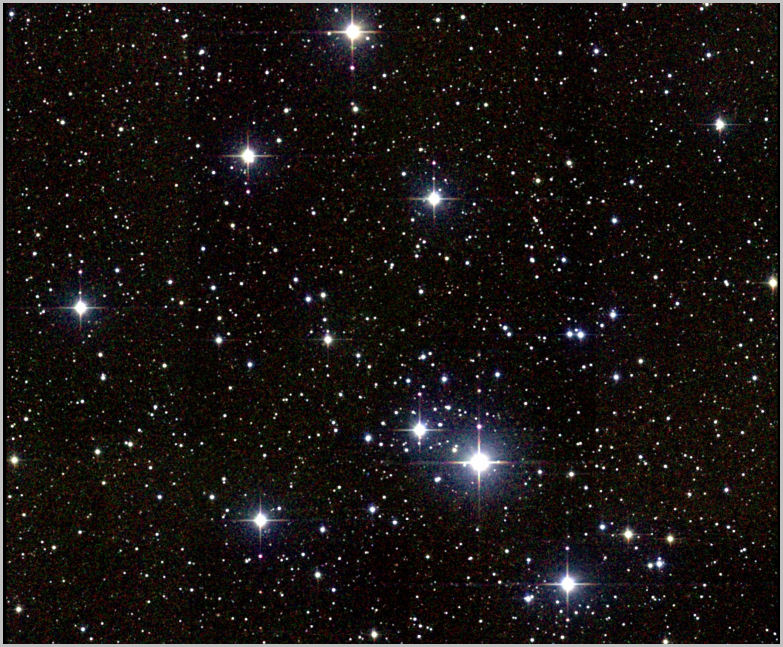
Open star cluster NGC 2362 is also visible to the naked eye at magnitude 4.1. The bright central star is Tau Canis Majoris, and the grouping is often referred to as the Tau Canis Majoris Cluster. It is one of the largest open clusters, estimated to contain about 500 stars, about 4,000 light years away.
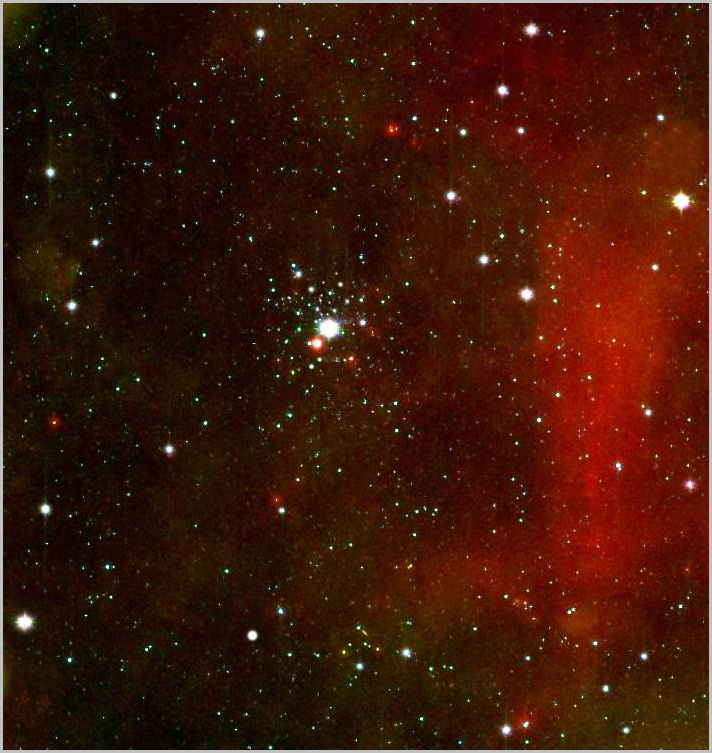
NGC 2359 is an emission nebula, given the name Thor's Helmet. It is 30 light years across, located about 15,000 light years away, with a magnitude around 10.
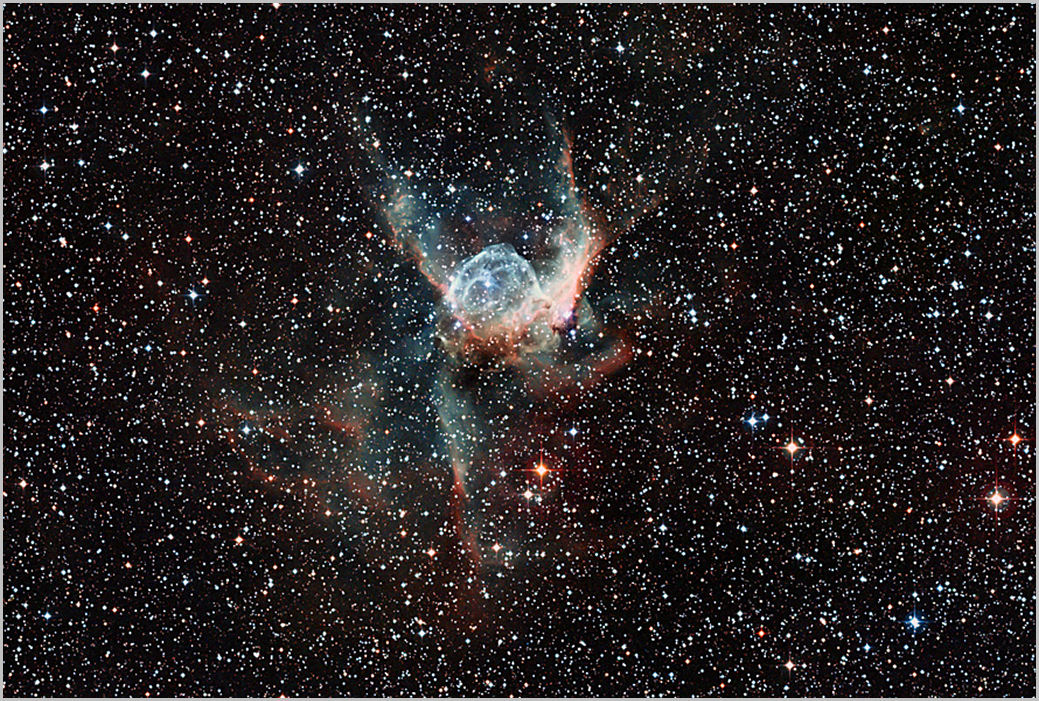
A closeup of the central region of NGC 2359 reveals the giant Wolf Rayet star HD 56925, very bright in the left centre of the image below. The star is nearing the end of its life, casting off its outside layers before it goes supernova.
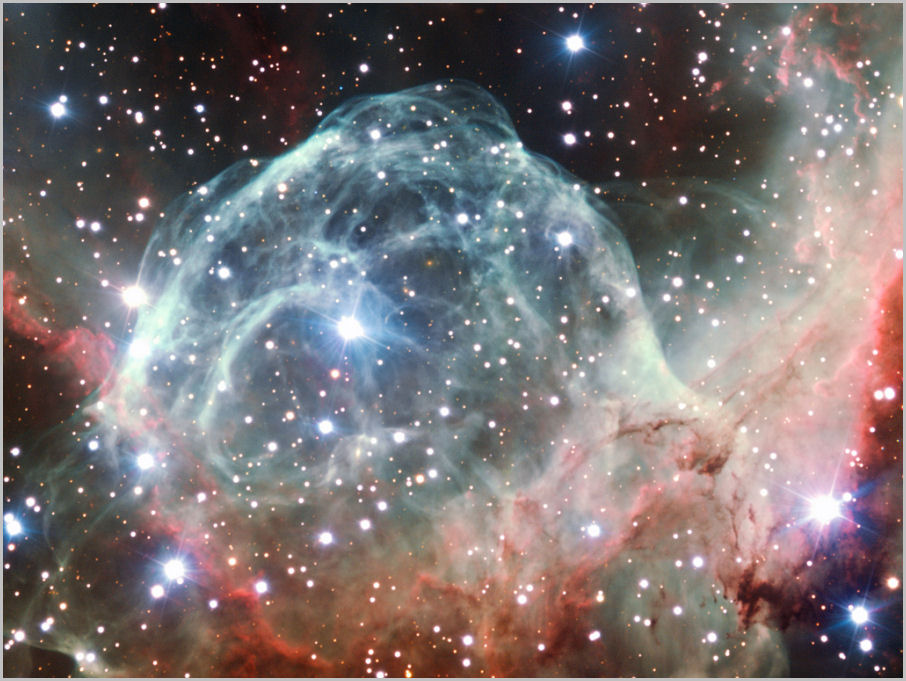
Looking outside our galaxy, the first object of interest is ESO 489-056, a dwarf galaxy 16 million light years away containing about one billion stars. The merging spiral galaxies that appear to be part of the lower left corner of the dwarf galaxy are merely in the same line of sight and are actually many millions of light years behind it. With a magnitude of 14.7, the dwarf galaxy is only visible in large telescopes. It should not be confused with the Canis Major Dwarf Galaxy, a controversial name given to an dense collection of stars hidden behind dust clouds deep inside the Milky Way.
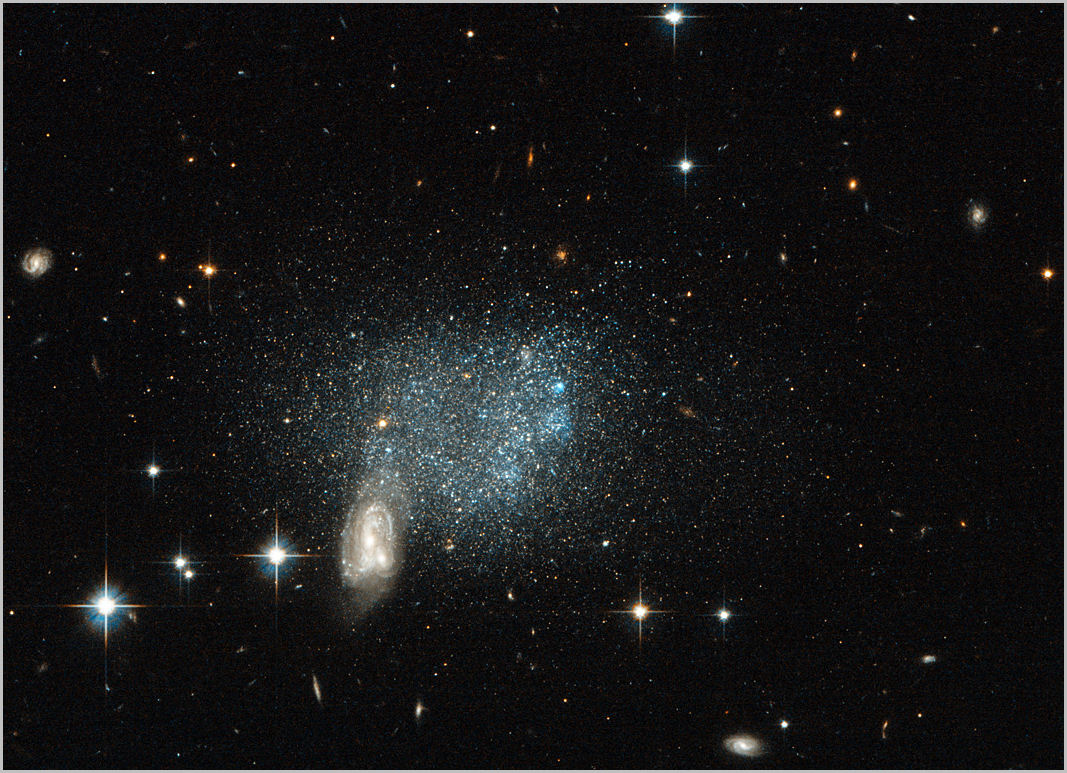
Much farther away at 65 million light years is NGC 2217, a spiral galaxy with a prominent central bar, and a magnitude of 10.4.
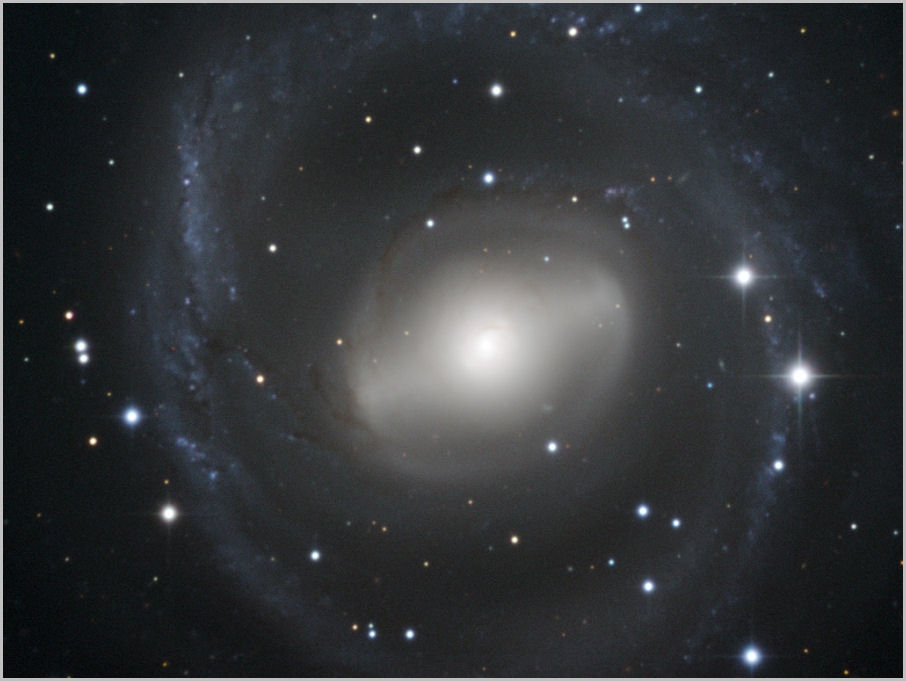
Farther still at 75 million light-years is NGC 2280, a spiral galaxy with a magnitude of 11.0.
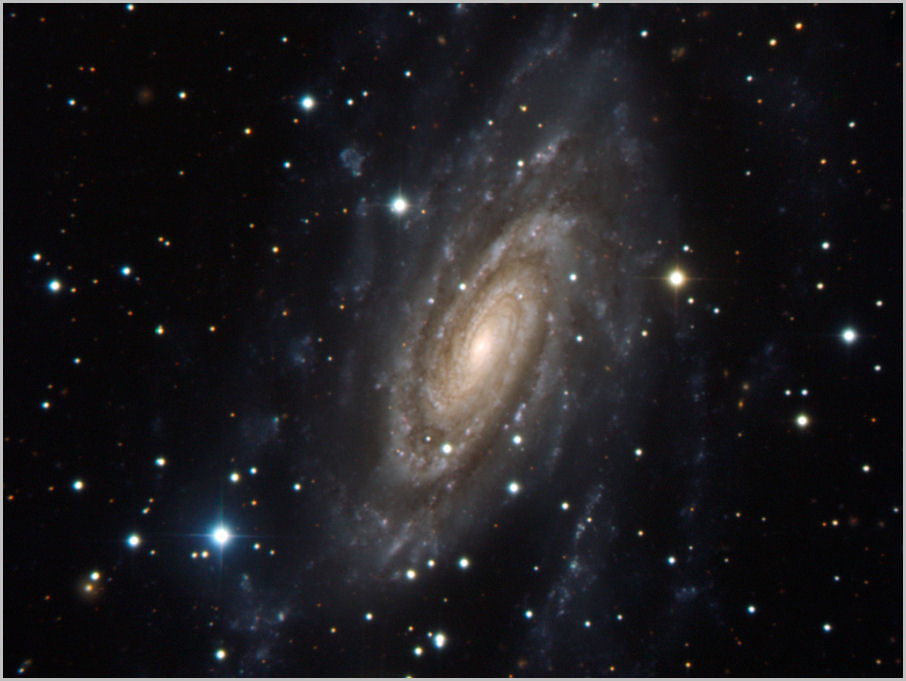
Finally we have a pair of merging galaxies out at a distance of 86 million light years. The large spiral galaxy, NGC 2207, is in the process of assimilating the smaller spiral galaxy, IC 2163. The pair have a combined magnitude of 10.2.
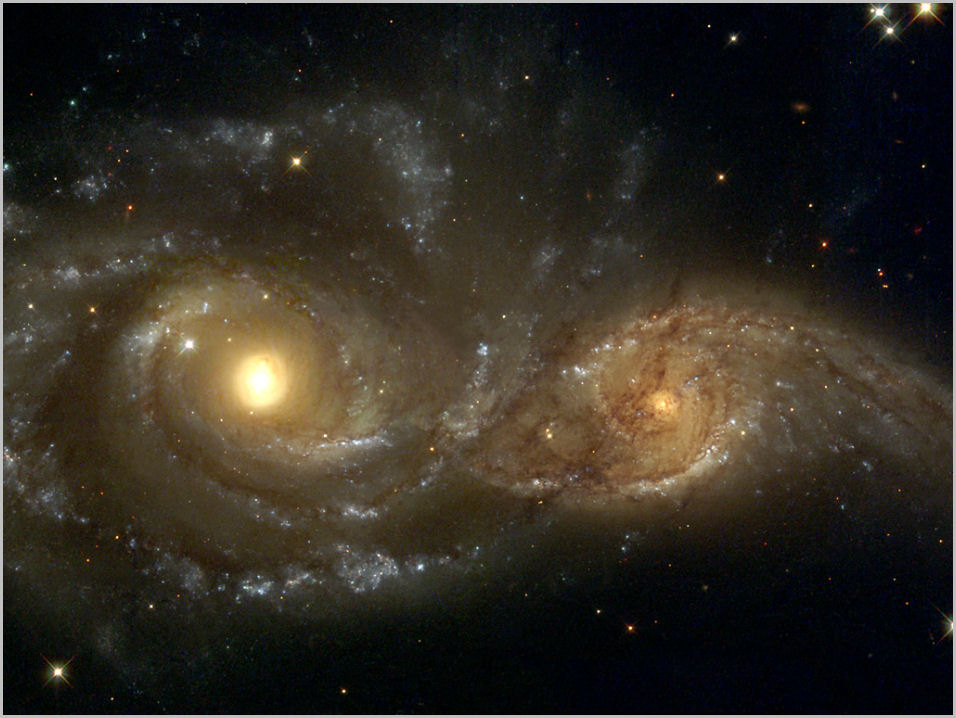
|
|
|
|
|
|